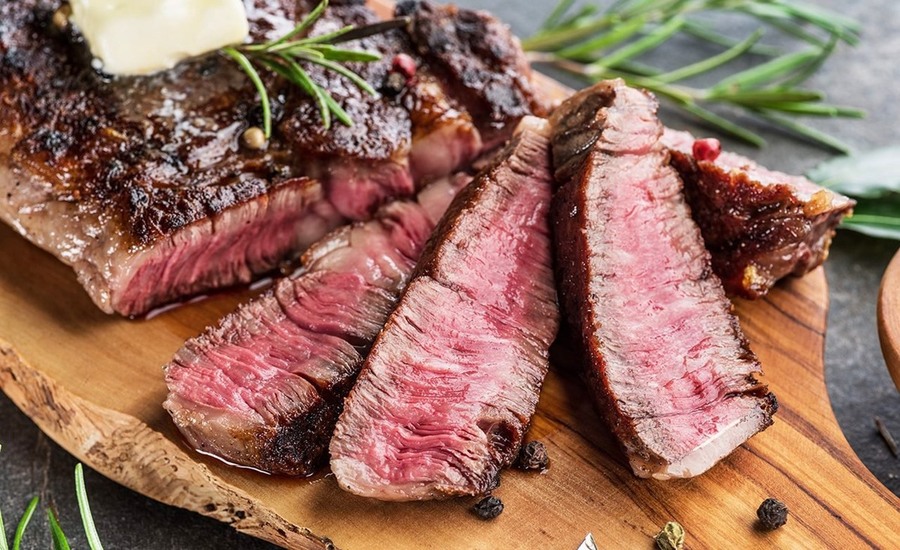How to Achieve a Restaurant-Quality Steak at Home?
Craving a juicy, perfectly cooked steak that rivals the finest restaurants in Harbor View Suffolk? You don’t need to dine out to enjoy a restaurant-quality steak. With the right techniques and a few simple ingredients, you can recreate that delicious experience in the comfort of your own kitchen. This guide will take you through the steps to achieve a perfect steak at home, from selecting the right cut of meat to mastering the cooking process.
1. Choose the Right Cut of Steak
The foundation of a restaurant-quality steak starts with selecting the right cut. Not all steaks are created equal, and choosing the right one can make a big difference. Here are a few popular cuts to consider:
- Ribeye: Known for its marbling and tenderness, the ribeye is a favorite among steak lovers. The fat within the steak melts during cooking, resulting in a rich, juicy flavor.
- New York Strip: This cut is less fatty than the ribeye but still offers a great balance of flavor and tenderness. It has a firm texture, making it perfect for those who prefer a more substantial bite.
- Filet Mignon: The most tender cut of beef, filet mignon is leaner and has a milder flavor. It’s ideal for those who prefer a soft, buttery texture.
- T-Bone or Porterhouse: These cuts offer the best of both worlds: a tenderloin on one side and a strip steak on the other. The T-bone has a smaller portion of the tenderloin, while the porterhouse has a larger one.
For the best results, choose steaks that are at least 1 to 1.5 inches thick. Thicker cuts allow for better control of the internal temperature, giving you that perfect crust without overcooking the inside.
2. Seasoning: Keep It Simple
When it comes to seasoning a steak, simplicity is key. High-quality meat doesn’t need a lot of embellishments. A generous amount of coarse salt and freshly ground black pepper is often enough to enhance the steak’s natural flavors. Season your steak liberally on all sides at least 30 minutes to an hour before cooking. This not only flavors the meat but also helps create a beautiful crust.
For an extra layer of flavor, you can add a sprinkle of garlic powder, onion powder, or a touch of smoked paprika. However, avoid using too many seasonings or marinades, as they can mask the taste of the steak.
3. Bring Your Steak to Room Temperature
Before cooking, allow your steak to come to room temperature. This step is crucial for even cooking. If the steak is too cold, the exterior can overcook while the interior remains undercooked. Letting it rest at room temperature for about 30 to 60 minutes ensures a more consistent cooking process. This way, your steak will surely be perfect like the ones served at steak restaurants near me.
4. The Perfect Sear: Use a Cast Iron Skillet
Achieving a restaurant-quality crust requires high heat, and a cast iron skillet is the perfect tool for the job. Cast iron retains and distributes heat evenly, helping you achieve that coveted caramelized crust. Here’s how to do it:
- Preheat your cast iron skillet over medium-high heat until it’s smoking hot. You want the pan to be extremely hot to create a proper sear.
- Add a high smoke point oil, such as canola, grapeseed, or vegetable oil. Avoid using butter at this stage as it has a low smoke point and can burn.
- Place the steak in the skillet and press down to ensure good contact with the pan. Let it sear undisturbed for about 2 to 3 minutes, or until a deep golden-brown crust forms. Flip the steak and repeat on the other side.
5. Finish in the Oven or Continue on the Stove
Depending on the thickness of your steak, you may need to finish it in the oven. For steaks that are 1.5 inches thick or more, transferring them to a preheated oven (around 400°F) helps cook the steak evenly without burning the outside. Use an oven-safe skillet or transfer the steak to a baking sheet if needed. Cook until the steak reaches your desired internal temperature:
- Rare: 120-125°F
- Medium Rare: 130-135°F
- Medium: 140-145°F
- Medium Well: 150-155°F
- Well Done: 160°F and above
If your steak is less than 1.5 inches thick, you can continue cooking on the stove over medium heat. Add a knob of butter along with fresh herbs (such as rosemary, thyme, or garlic cloves) to the skillet for added flavor. Tilt the pan slightly and spoon the melted butter over the steak, basting it continuously to enhance the crust and flavor.
6. Use a Meat Thermometer
A meat thermometer is an essential tool for cooking steak to the perfect doneness. Insert the thermometer into the thickest part of the steak without touching the bone or pan. This ensures an accurate reading and helps you avoid undercooking or overcooking your steak.
7. Let It Rest
After cooking, let your steak rest for at least 5 to 10 minutes. Resting allows the juices to redistribute throughout the meat, resulting in a juicier, more flavorful steak. Cutting into the steak too soon can cause the juices to run out, leaving you with a dry piece of meat.
8. Slice Against the Grain
When it’s time to serve, slice the steak against the grain. The grain refers to the direction of the muscle fibers. Cutting against the grain shortens these fibers, making the steak more tender and easier to chew.
9. Serve with the Right Sides and Sauces
To elevate your at-home steak dinner to restaurant quality, consider serving it with classic sides like garlic mashed potatoes, creamed spinach, or roasted vegetables. A simple salad with a tangy vinaigrette can also balance the richness of the steak. Additionally, sauces like béarnaise, chimichurri, or a rich red wine reduction can enhance the flavors of your steak.
Conclusion
Achieving a restaurant-quality steak at home is all about the right techniques and quality ingredients. By selecting the right cut, seasoning simply, using a cast iron skillet, and cooking to the perfect temperature, you can enjoy a delicious steak dinner without leaving your kitchen. With a little practice and patience, you’ll be able to master the art of steak cooking and impress your family and friends with every bite.






